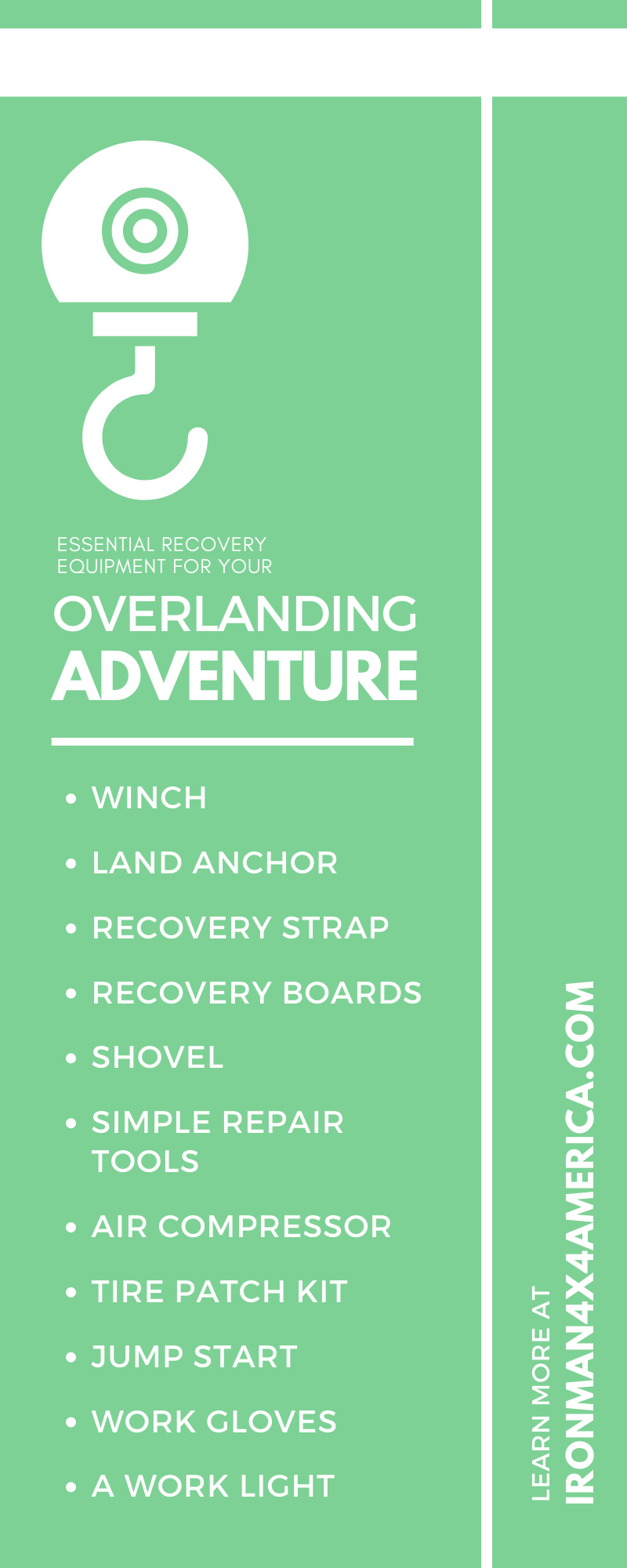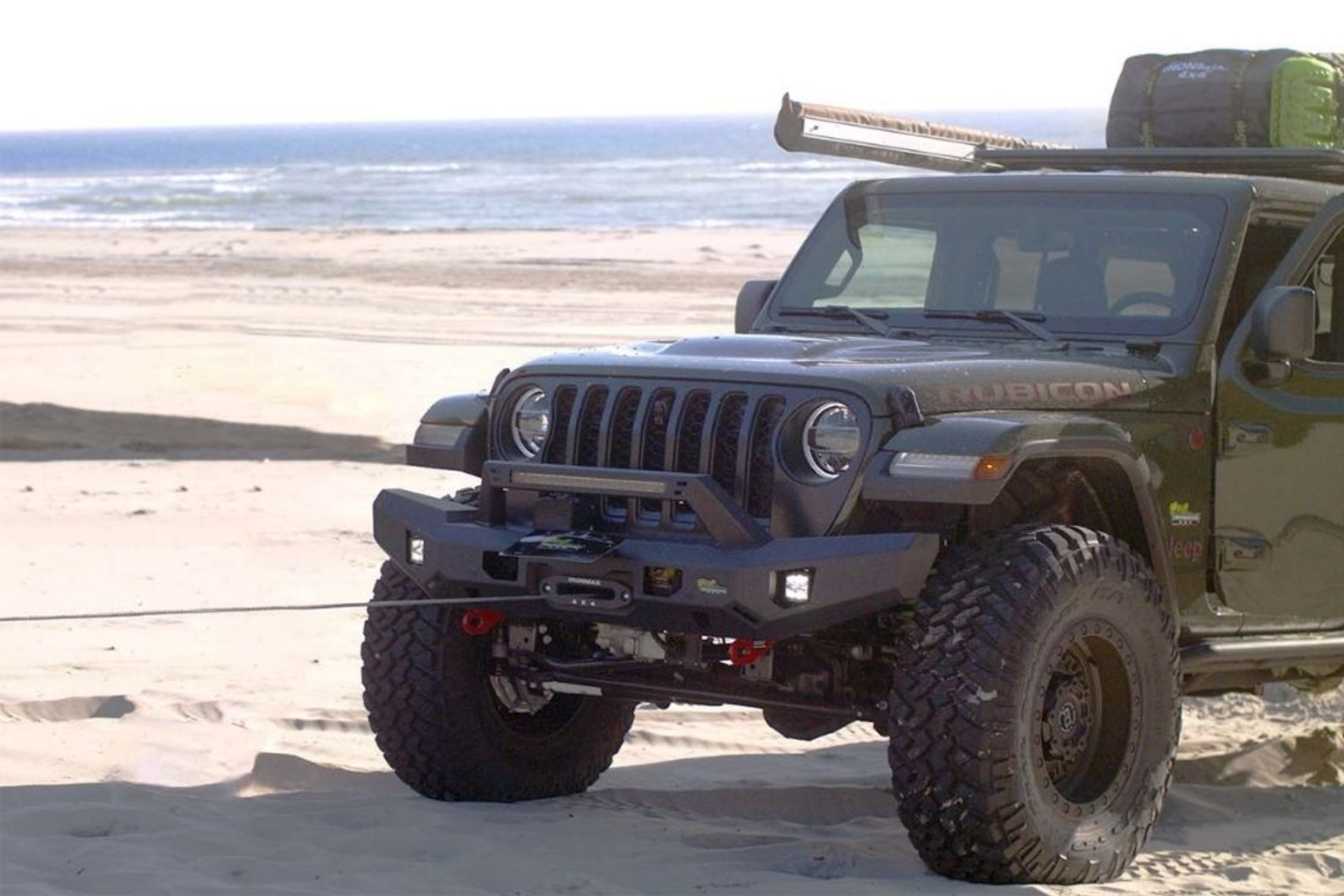Essential Recovery Equipment for Your Overlanding Adventure
Those of us who enjoy camping love the opportunity to get away from it all: city traffic, cell phone noise, and the pressures of everyday life. But sometimes, you need a little more distance than your local campground. Overlanding might be the kind of road trip you need.
But being that far away from it all comes with its own challenges—namely, not having people nearby to help you if you get stuck. Having this essential recovery equipment for your overlanding adventure will help you make your journey safely.
Winch
Whether you’re heading into the mountains or the desert, if you’re going off-road, you’ll want to have a good winch with a capacity of at least twice your vehicle’s total weight. There are several options when it comes to winches:
•Electric winches: Pull power from the vehicle’s battery.
•Hydraulic winches: Pull power from the vehicle’s power steering.
•Manual winches: Operated by hand.
Each type has its pros and cons. Naturally, manual winches are harder to use, especially on your own. Hydraulic winches are the most powerful, but require the vehicle to be on the whole time, which can be problematic when you’re away from fuel sources. That’s why most people choose electric winches.
Land Anchor
One of the most essential rules of using a winch correctly is to find a good anchor—a thick tree or a boulder, for instance. But there may be times when you get stuck and there’s nothing around to use as an anchor. That’s when a land anchor just might save your trip.
Land anchors are metal spades that you stick right in the ground. You can then attach your winch to them. They’re designed to dig deeper into the ground the harder you pull on them, making them reliable for recovery purposes.
Recovery Strap
Even though most of the time you’re on your own when you’re overlanding, you never know when you might meet someone who can help you when you’re in a jam. That’s why it’s always a good idea to keep a recovery strap in your vehicle.
Recovery Boards
Vehicle recovery equipment is one part muscle and one part physics. If you can’t get enough traction under your tires, getting your 4x4 out won’t be easy. Before you pull out your winch, you might want to get a set of recovery boards.
Store-bought recovery boards are raised boards often made of plastic with ridges to help your vehicle regain traction. But if you’re in a pinch and don’t have them, you can try to use your vehicle’s floor mats or even a bag of sand or kitty litter.
Shovel
This is the muscle part of the recovery process. Even with a traction board, it’s tough to get out when your wheels are buried six inches deep in mud, sand, or snow. To help things along, you may need to roll up your sleeves and dig your tires out. While using your hands is always an option, a shovel will save you time and effort.
Simple Repair Tools
When you’re miles away from the next auto shop and rolling over rough roads, you’ll need to be prepared in the event of something coming loose. This isn’t to say you need to have a heavy-duty toolbox with you, but a set of wrenches, pliers, drivers, and even a jack may come in handy.
Pro Tip
If you do have to jack your car up in the middle of the wilderness, you’ll need to make sure you have a flat surface on which to set the jack. Even something as simple as a piece of plywood will do the job.
Air Compressor
You might run into these tire issues when you’re driving around off-road: your tire has too much air or not enough. Any experienced off-roader will tell you that it’s better to have your tire underfilled to give you better traction. But you do still need enough air to keep you rolling.
An air compressor will help you navigate the problem. Unlike an air pump or deflator, air compressors will allow you to increase or decrease the air pressure of your tires. And given all the recovery gear you have to pack for an overlanding trip, having fewer pieces of equipment is always more ideal.
Tire Patch Kit
This is another potential tire issue you might have when you’re off-roading: getting a flat. Off-roading tires are built to handle some pretty monstrous obstacles, but there’s always a chance that something might cause them to blow.
Of course, you’ll probably have a spare tire on you, but it’s not always feasible to stop and replace it right away when you’re in the middle of the wilderness. In those circumstances, you’ll want the gear to help patch up the tire until you can replace it.
Jump Start
Overlanding is often a solitary trip. That can put you in a tough spot if your vehicle’s battery goes out and there’s no one around whose engine you can use to jump-start your car.
Fortunately, you can find the gear you need to jump-start a car without another engine. Portable car jumper batteries will allow you to attach your jumper cables. Some even come with air compressors built in.
Work Gloves
We’re often so focused on the big equipment that we forget to bring the things that will help us use the equipment safely. Work gloves are a good example of this. You don’t want to work with winch chords, jumper cables, or tools without work gloves. Even digging your car out with a shovel is better with gloves.
A Work Light
This is another one of those little pieces that are easy to forget. However, you’ll notice if you don’t have it. When you lose daylight in the wilderness, it gets very dark. And that can be the difference between being able to finish a repair job and not. Even if you’re working in broad daylight, trying to see under the hood isn’t exactly easy without a light.
There’s nothing like getting away from it all. And if you want to do it safely, Ironman 4x4 has all the vehicle recovery equipment you’ll need.


